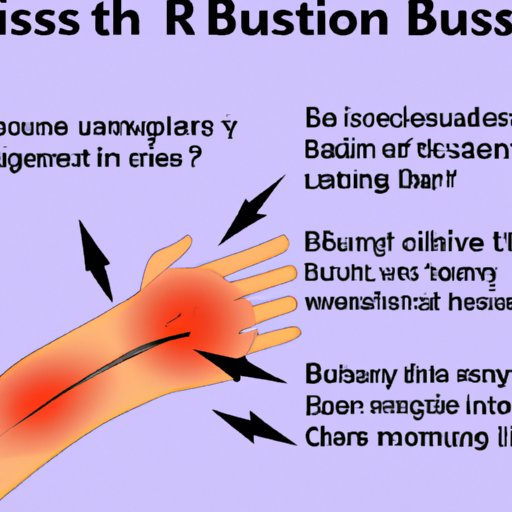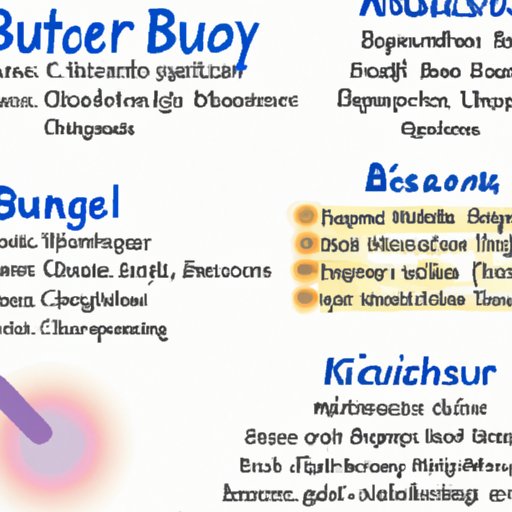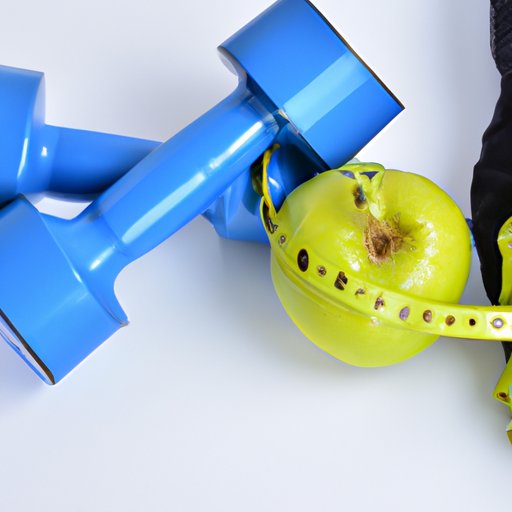Introduction
Bruising is a common occurrence that affects many people, yet few know exactly why it happens or how to treat it. To better understand bruising, it’s important to first define it. A bruise occurs when small blood vessels in the skin called capillaries are damaged, resulting in bleeding under the surface of the skin. This can happen for a variety of reasons, including illness, injury, or even just bumping into something.
When a bruise appears, it usually starts off as a red or purple mark before changing color as it heals. Depending on the size and severity of the bruise, it can last anywhere from several days to several weeks. There are different types of bruises, ranging from minor to more serious ones that require medical attention.

The Science Behind What Causes a Bruise
To understand what causes a bruise, it’s important to first understand how blood vessels and capillaries work. Blood vessels are responsible for transporting oxygenated blood throughout the body. Capillaries are tiny blood vessels that are located between the arteries and veins. They are responsible for exchanging materials between the cells and the bloodstream.
When a person experiences trauma or an injury, such as a fall or bump, the capillaries can become damaged, causing them to leak blood. This leaking blood collects under the skin, leading to the formation of a bruise. When this happens, the area around the bruise may also swell and turn red as the body attempts to repair the damage.
A Look at How Bruises Heal Over Time
As the body begins to heal, the bruise will start to change color. Initially, the bruise will appear red or purple before gradually turning yellow, green, and then eventually fading away. The amount of time it takes for a bruise to heal depends on a number of factors, including the size of the bruise and the person’s age and overall health. Generally speaking, most bruises will heal within two to four weeks.
There are certain things you can do to help speed up the healing process. For example, applying a cold compress to the area can help reduce swelling and pain. Additionally, over-the-counter medications such as ibuprofen can help reduce inflammation and pain. Natural remedies such as arnica gel and witch hazel can also help reduce swelling and pain.

An Overview of Treatments for Bruising
In addition to home remedies, there are a number of other treatments that can be used to help reduce the appearance of bruises. Cold compresses are one of the most commonly used methods. Applying a cold compress to the affected area can help reduce swelling and pain. It is important to note that cold compresses should not be applied directly to the skin, as this can cause further damage.
Over-the-counter medications such as ibuprofen and acetaminophen can also be used to reduce pain and swelling. Additionally, some topical creams and ointments can be used to reduce inflammation and speed up the healing process. Natural remedies, such as arnica gel and witch hazel, can also be used to reduce swelling and pain.

The Role of Diet and Exercise in Preventing Bruising
Eating a balanced diet that includes foods rich in vitamin C, such as oranges and broccoli, can help boost the immune system and support the body’s natural healing process. Additionally, increasing physical activity can help strengthen the body and reduce the risk of bruising. Regular exercise can help improve circulation and make the body less prone to bruising.
Conclusion
Bruising is a common occurrence that can cause discomfort and pain. By understanding the science behind what causes a bruise, as well as the treatments available, people can take control of their health and reduce the risk of bruising. Eating a balanced diet rich in vitamin C and increasing physical activity can help boost the immune system and support the body’s natural healing process. With the right knowledge and care, bruising doesn’t have to be a big problem.
In summary, bruising occurs when small blood vessels called capillaries are damaged. The size and severity of the bruise will determine how long it takes to heal, but it generally lasts two to four weeks. Treatments include cold compresses, over-the-counter medications, and natural remedies. Eating a balanced diet and exercising regularly can also help reduce the risk of bruising.
(Note: Is this article not meeting your expectations? Do you have knowledge or insights to share? Unlock new opportunities and expand your reach by joining our authors team. Click Registration to join us and share your expertise with our readers.)
